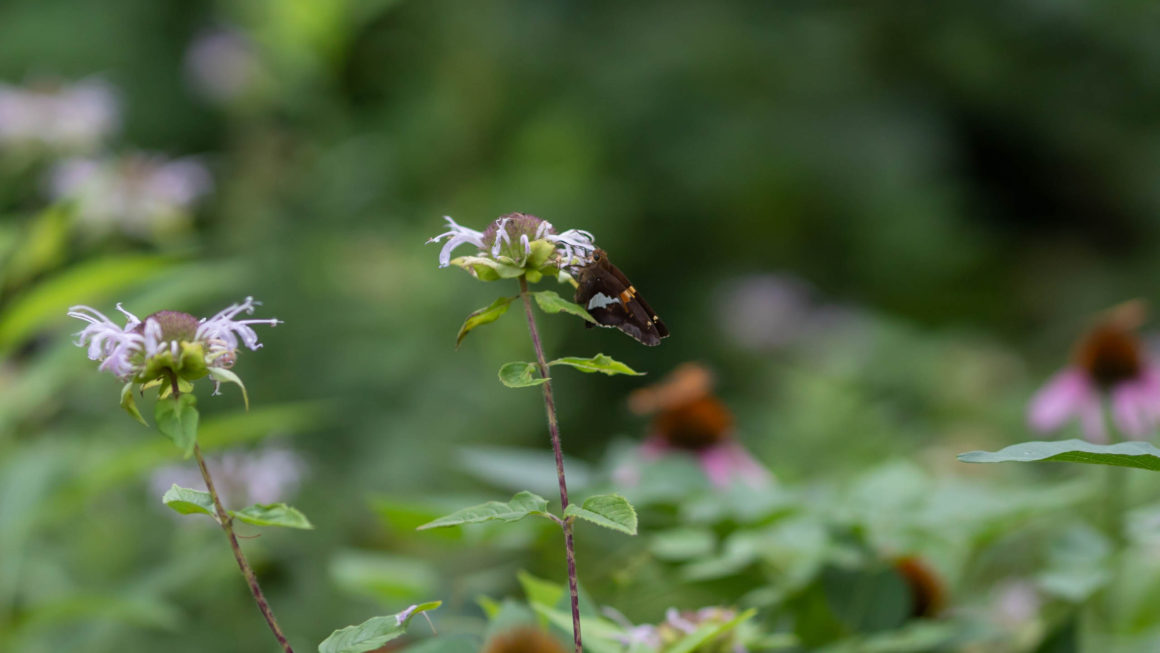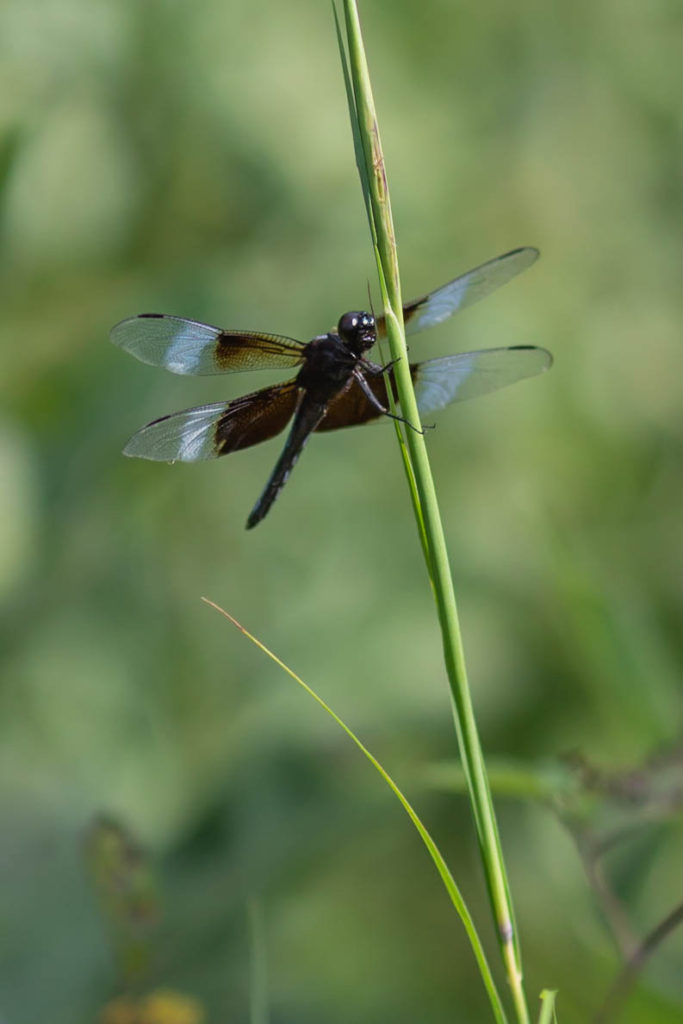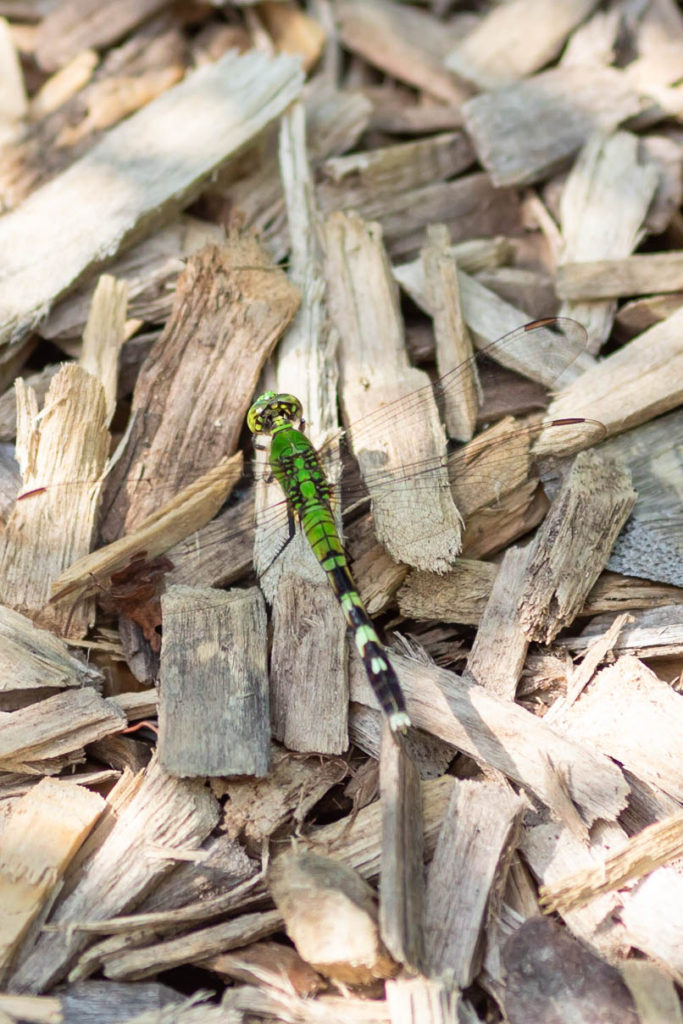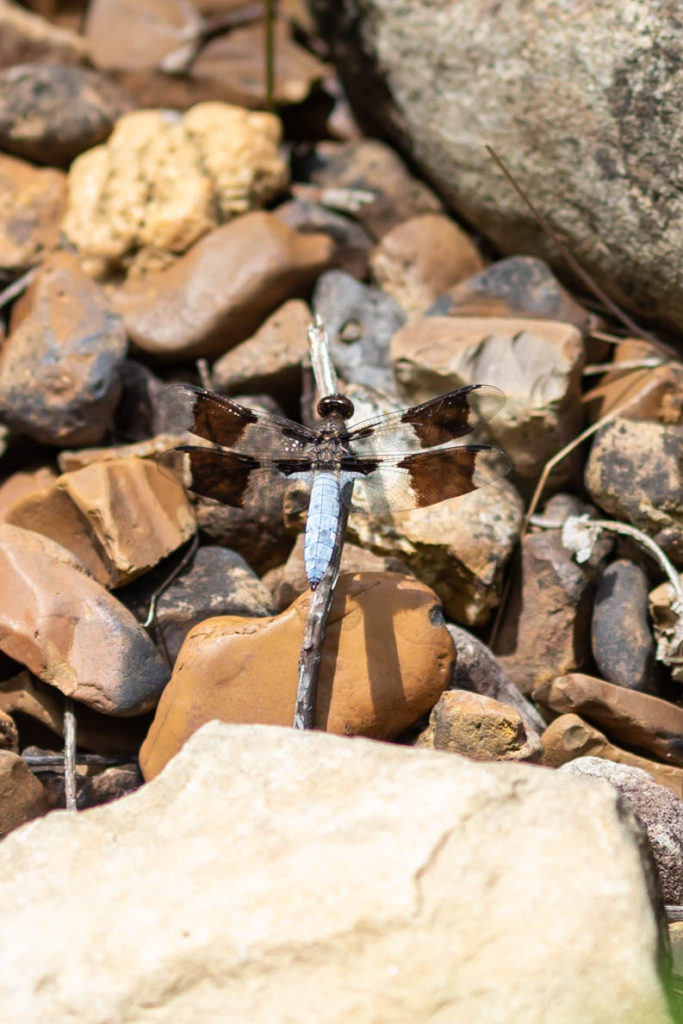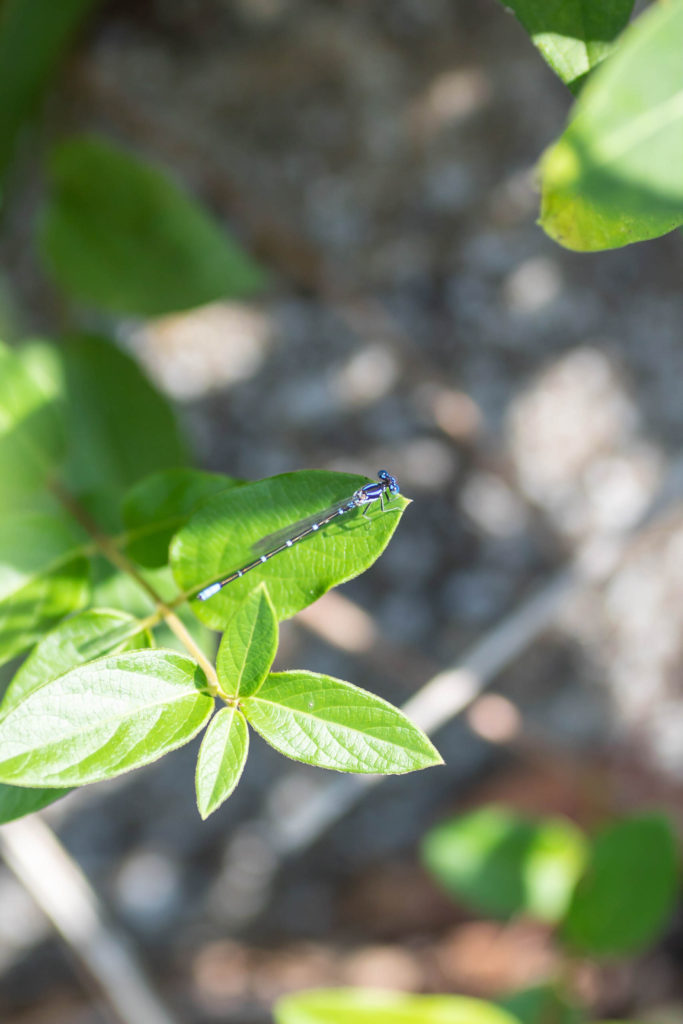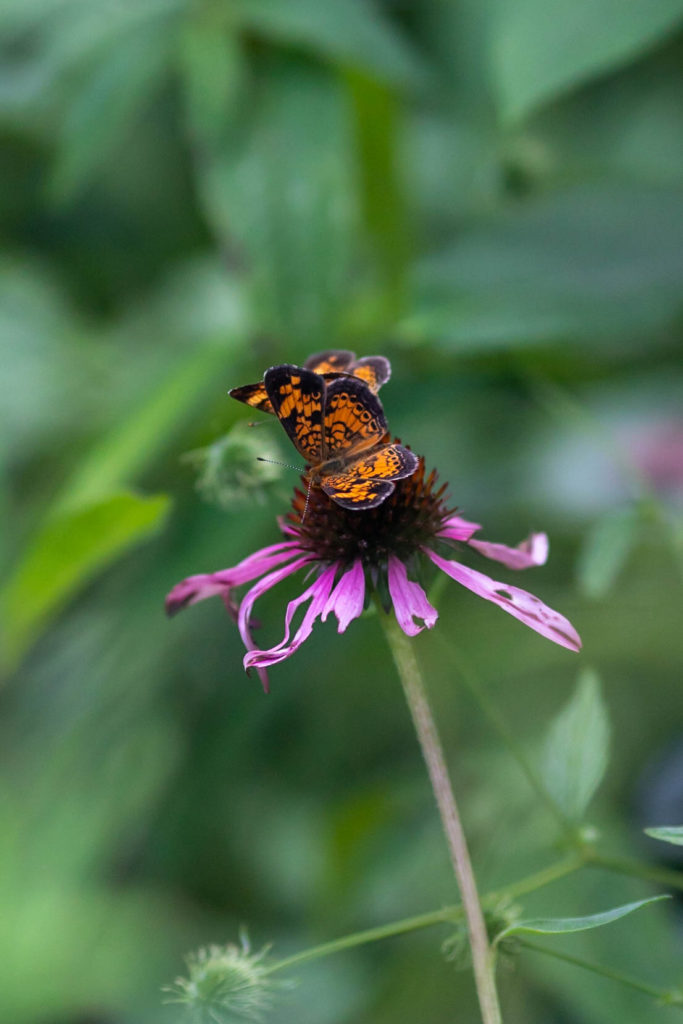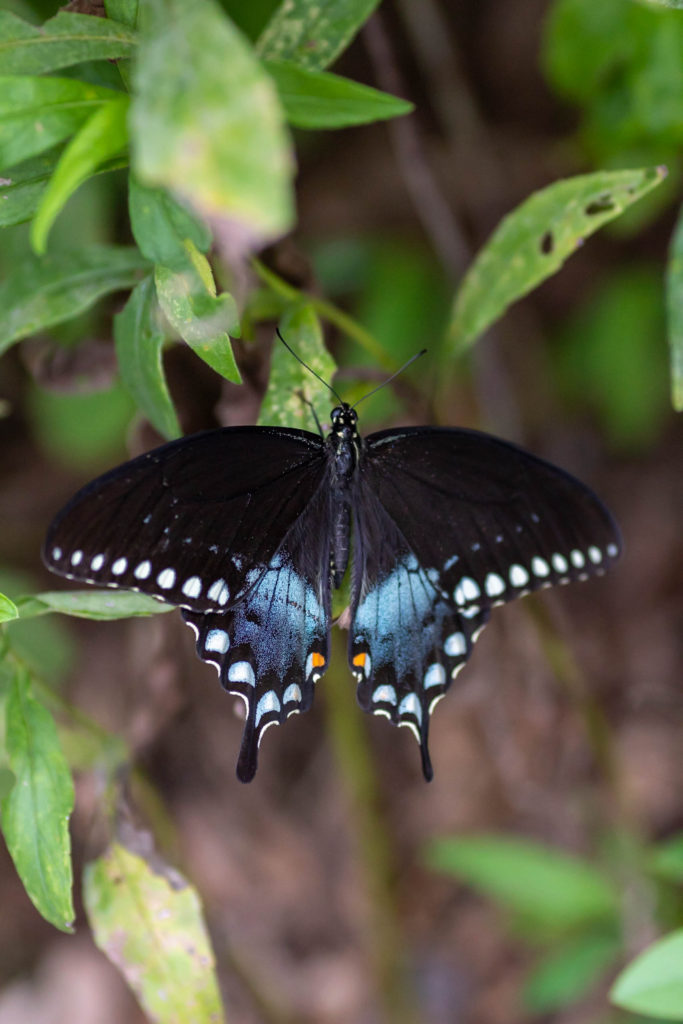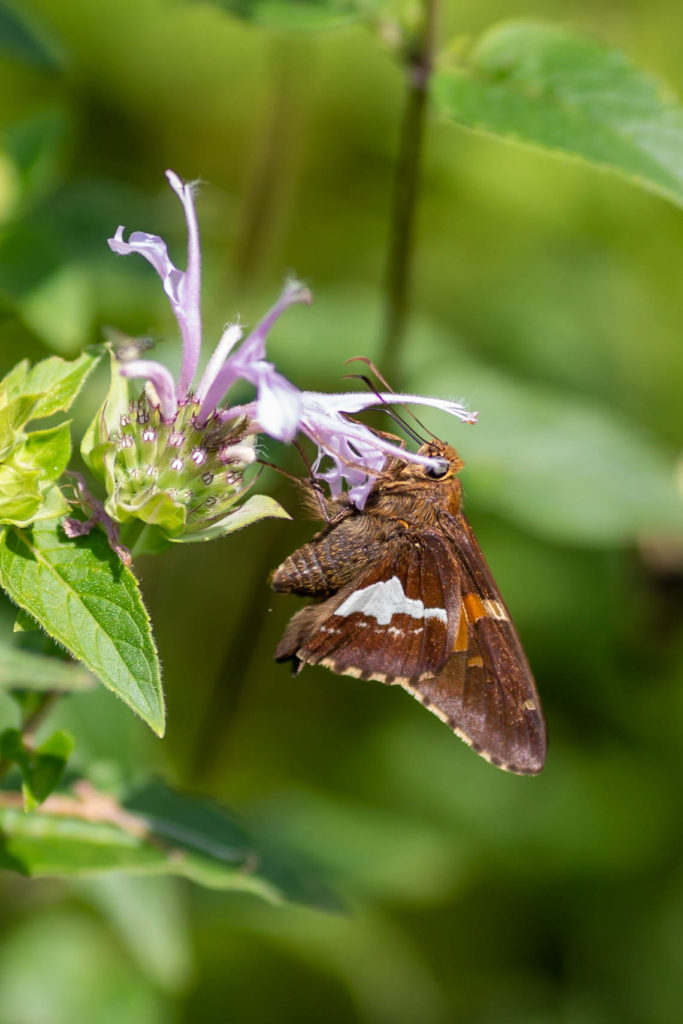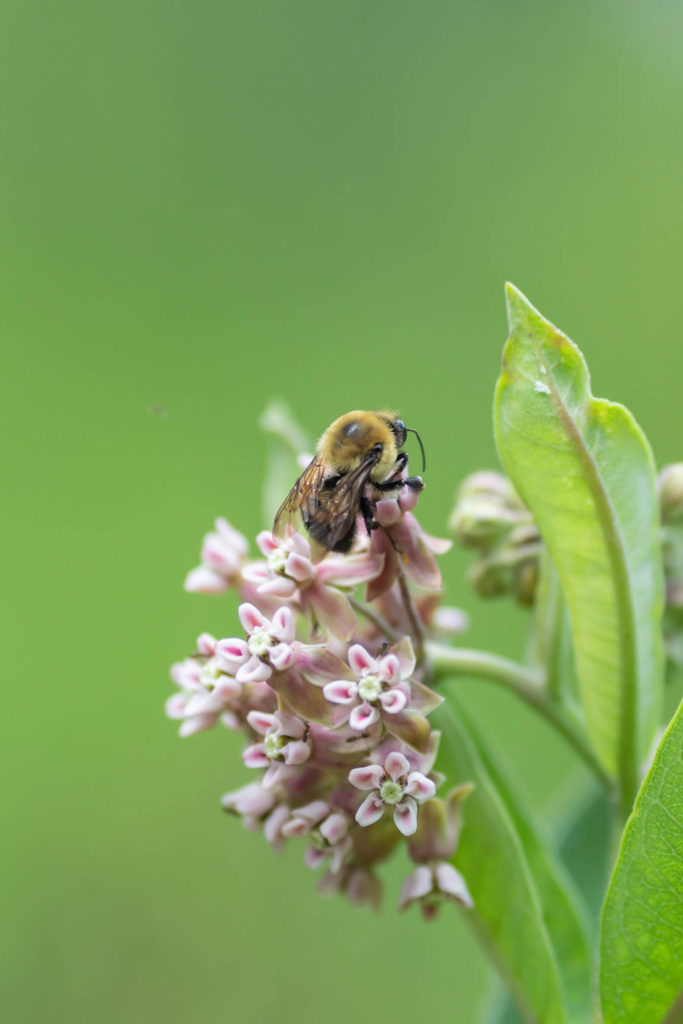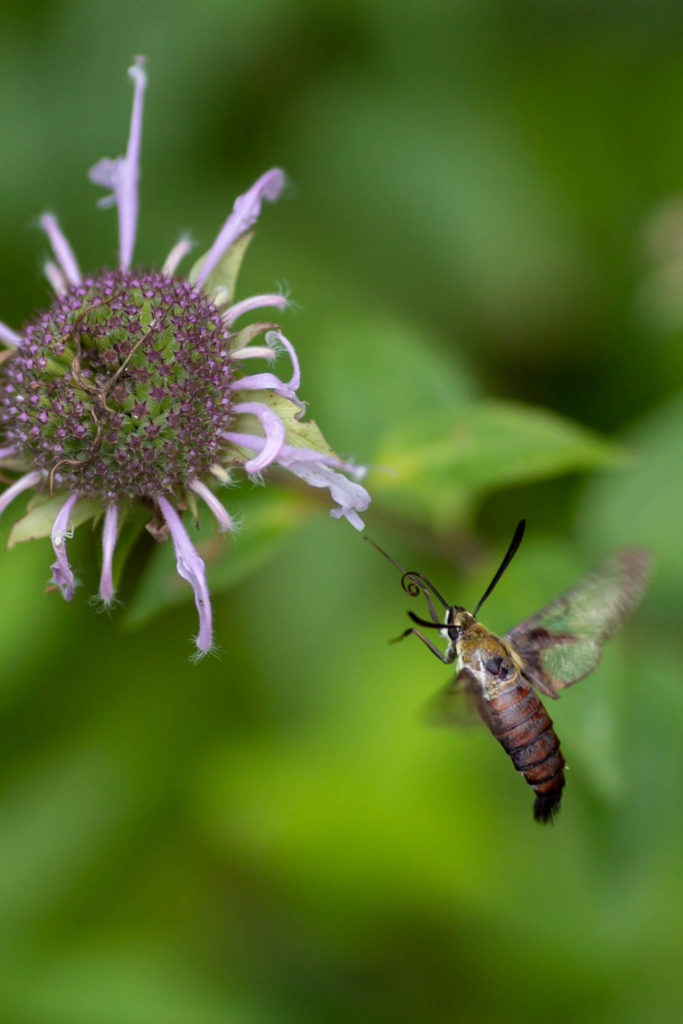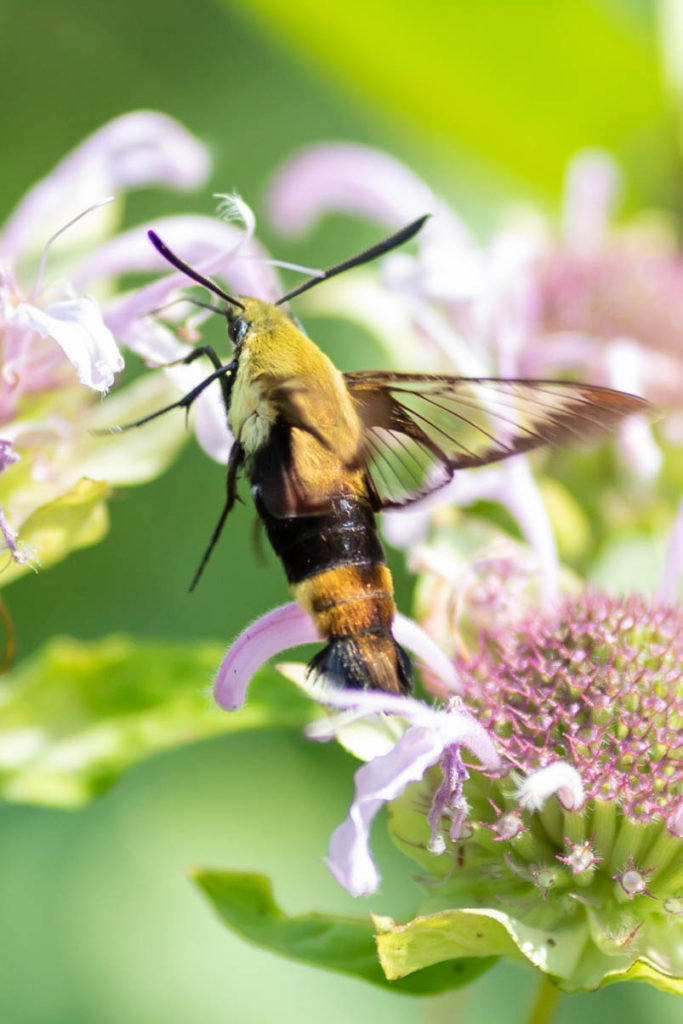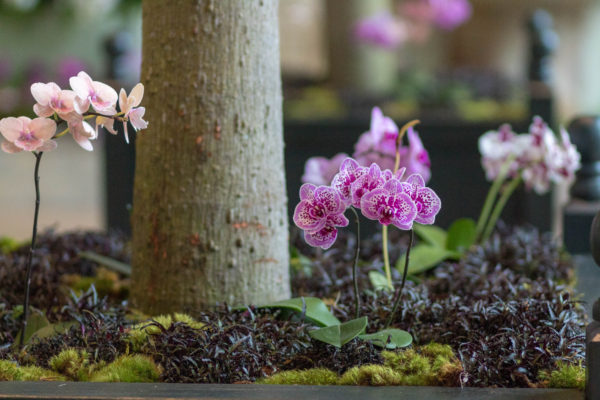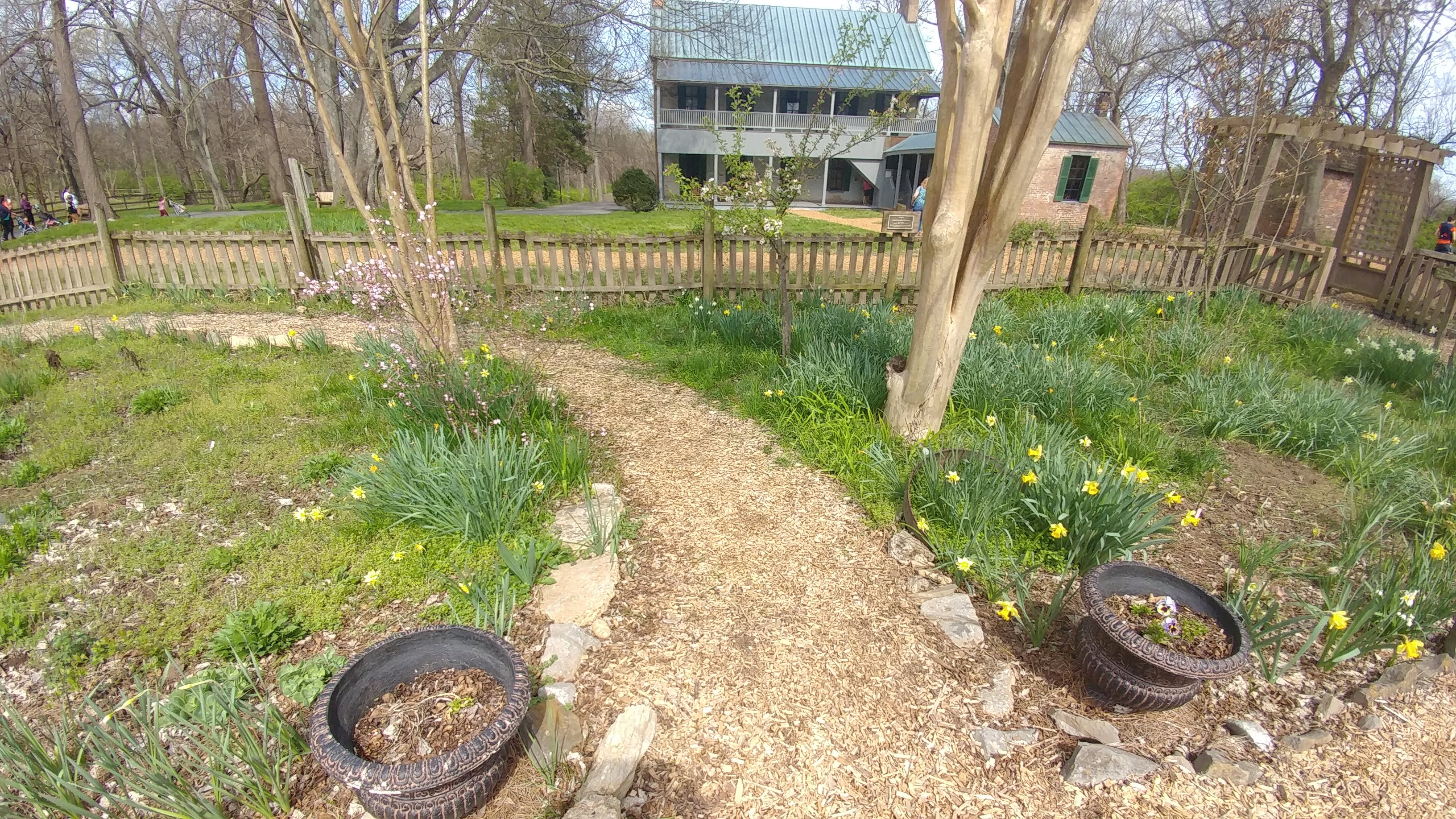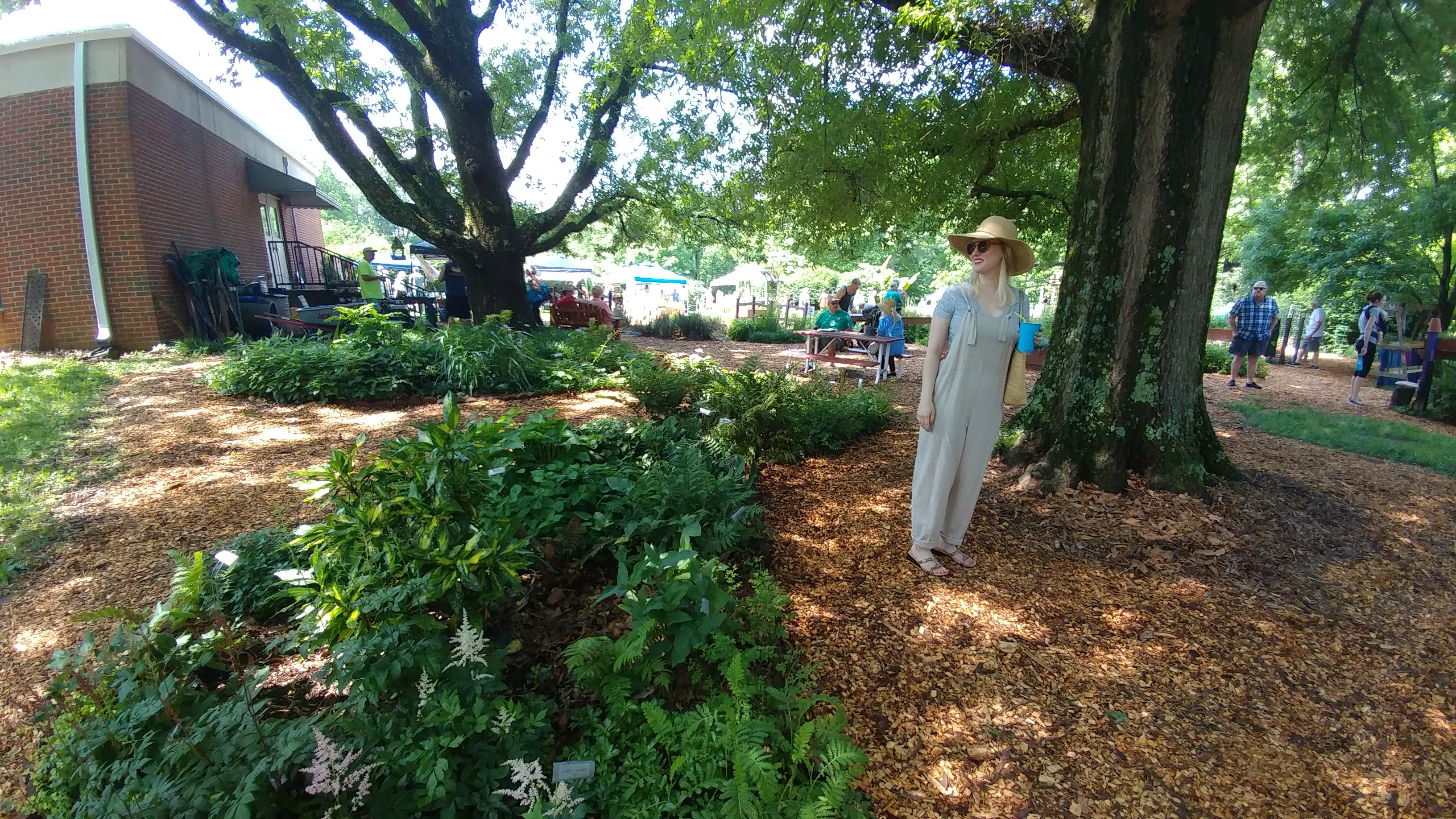Looking to do a day hike with my parents, I searched for a state park halfway between us. Burgess Falls was one of several state parks with waterfalls that fit the bill. The deciding factor was that Burgess Falls had a Native Butterfly Garden. So, I was sold on Burgess Falls for Butterfly Garden and of course the actual waterfalls.
When we pulled up and met my parents, we weren’t sure where the butterfly garden actually was. After wandering around for a little, we found the butterfly garden in the middle of one of the parking lots. It’s kind of easy to miss. I guess, like me, most people wouldn’t expect a native butterfly garden to be in the middle of a parking lot. However, once you stop to observe, it becomes more obvious. I saw all sorts of creatures buzzing around the garden, not just butterflies.

I saw several dragonflies and damselflies. Dragonflies have shorter, fatter bodies, while damselflies have long skinny bodies. At rest, dragonflies’ wings are extended. Damselflies keep their wings together at rest. Burgess Falls State Park even has a checklist for dragonflies and damselflies so you can check off which ones you see. Here is what I was able to identify – correct me if I’m wrong!

Widow Skimmer Dragonfly 
Eastern Pondhawk Dragonfly 
Common Whitetail Dragonfly 
Blue-ringed Dancer (?) Damselfly
I of course saw several butterflies, some even sharing the same flower. Burgess falls also has a checklist. I was able to capture several species on my visit. The pearl crescent particularly loved the coneflowers (Echinacea), and the skippers were all over the bee balm (Monarda). Butterflies seem to prefer flowers that have a “landing pad” so they don’t have to struggle to hand on while getting their nectar. I saw some remnants of milkweed, so I am sure there were even more butterflies earlier in the summer.

Pearl Crescent Butterflies 
Spicebush Swallowtail 
Silver-spotted Skipper 
Little glassywing Skipper
The bees were certainly able to find the last of the milkweed. They are more easily able to fly and climb on/around/in flowers. And of course the bees love bee balm too. Pretty much everything that the butterflies like, the bees like too.
Though I came for the butterflies, (and who doesn’t love butterflies), I was treated to an even rarer sighting – hummingbird moths! They are super fast, and look kind of like a large bee at first glance, so you might have seen one without realizing it. At first I just thought it was a big bee — most are yellow and black. After googling variations of “big bee” with other descriptors, I finally found pictures that resembled what I was seeing. It is called a Snowberry clearwing moth or latin name Hemaris diffinis. The first picture below is for scale. Zoomed in, they look a lot larger. They are about the size of the central part of the monarda flower. Next time you’re by a big bee balm patch, stop and wait for a while. You might see one!
As I was taking pictures of these hummingbird moths like a psycho paparazzi, a man cautiously came up to me. He waited for me to take a break to ask “Is this the butterfly garden?” I wanted to say, you see me taking pictures like a madwoman, right? Instead, I kindly said, “Yes.”
So, how can a garden be so chock full of pollinators but yet people miss it? Well, most people think of very, neat, manicured flower beds, where each plant stays in its own lane. They don’t think of tattered flowers, browning leaves, and subdued colors. Pollinators prefer native flowers. There are so many vibrant cultivars now that people don’t realize what the native original species look like. They also like a garden that’s a little messy or wild. Pollinators need shelter, and having a garden that is at least a little unkempt allows pollinators to make their home there.
You also wouldn’t expect to see a butterfly garden in the middle of a parking lot loop. But what I love about this garden is that it illustrates you can have a garden teeming with pollinators — butterflies included — with very little space almost anywhere. You can also create this garden at very low cost — less that $10 — even free. Buy some milkweed, coneflower, aster, and bee balm seeds. Or, check out your local library. Many have a seed exchange program. Davidson County and Williamson County Public Libraries have seed exchange programs. There are also local plant swap and seed swap groups on Facebook that are always welcoming to new gardeners.
Take this as inspiration to create a pollinator garden with whatever space you have!
